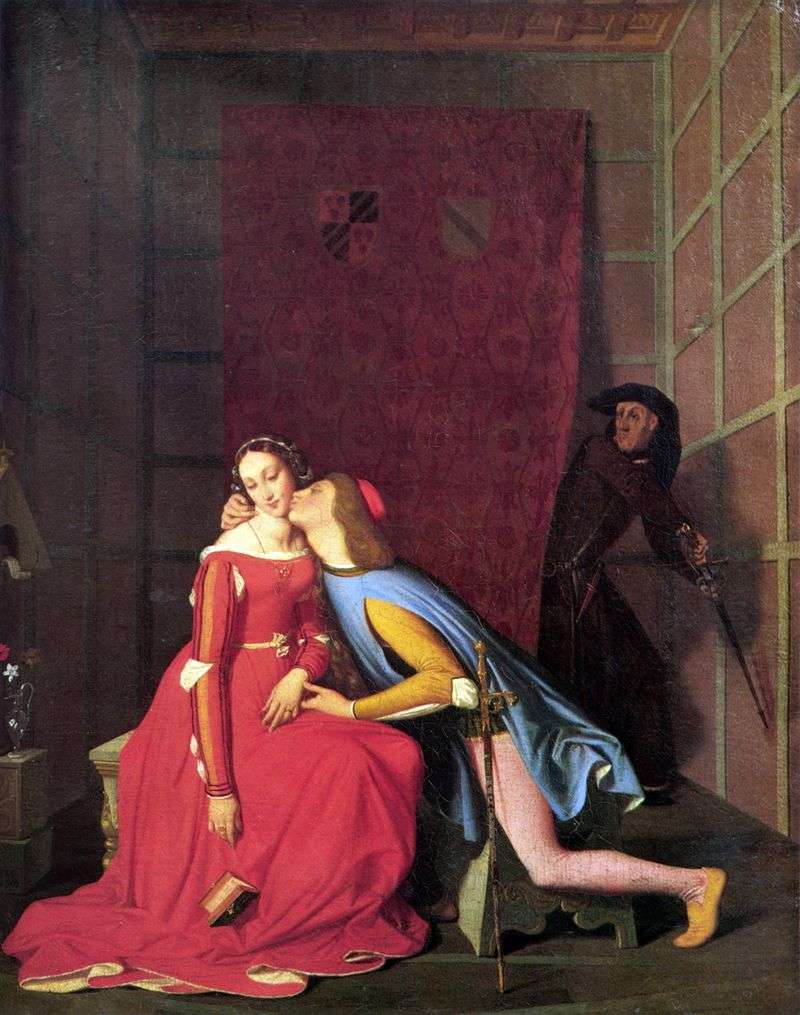
French painter and graphic artist, representative of the academic school of painting, Jean Auguste Dominique Ingres, wrote the canvas “Gianchotto overtakes Paolo and Francesca” at the time of its formation and, as the critics say, with the already formed style of writing. The work was unusually popular in European painting of the XIX century, but was considered as a myth or a beautiful story about the unhappy love of real characters.
At the heart of the main theme of the work of Engra is the scene of exposing the infidelity of his wife Francesca by her unloved spouse Ganciotto Malatest, ruler of Rimini. The paradox of fate, but the lover of the beauty was Giancotto’s brother, – Paolo. According to the real stories of the crowd, or its violent imagination, an angry spouse, the one who is waving a certain instrument on his rival, caught the sweet kiss scene in the Castle of Gradara in the Italian province. However, there are other versions of the location of the events – this is Rimini or Pesaro.
Without making further digressions, one can assume that in his work Engr favored Gradar and depicted his gloomy interior with a geometric pattern of walls. The illustration is based on contrasts. This applies not only to the color solution, but also to the images – the ocher pallor of the old man, with the grimy face covered with wrinkles and the freshness of young bodies, apple blush and whiteness of the skin. As usual, the author did not focus on small things, preferring large details.
However, Ingres started using jeweler’s skill with regard to decorations and nuances of clothing. Here, and an open purse on a long chain on the wrist of Francesca, and a thin sword blade in sheath, pointed shoes. But the attire of the beauty was not accurately conveyed, representing a suit of a European lady of a later period, although the slits on the elbows are a characteristic detail for the clothes of the 13th century, but the female robe looked not so. The work uses ocher-red colors, scarlet, brick and brown.
Shades a thick cloud of warm colors Paolo’s clothes with azure surco and yellow cotta. Perhaps, this contrast in colors is enough to not muffle the simplicity of composition and the construction of the scene. As for the further fate of the characters, the scene preceded the prompt killing of both culprits of Ganciotto’s wrath. He killed them – fresh, fragrant and loving – Francesca and Paolo.
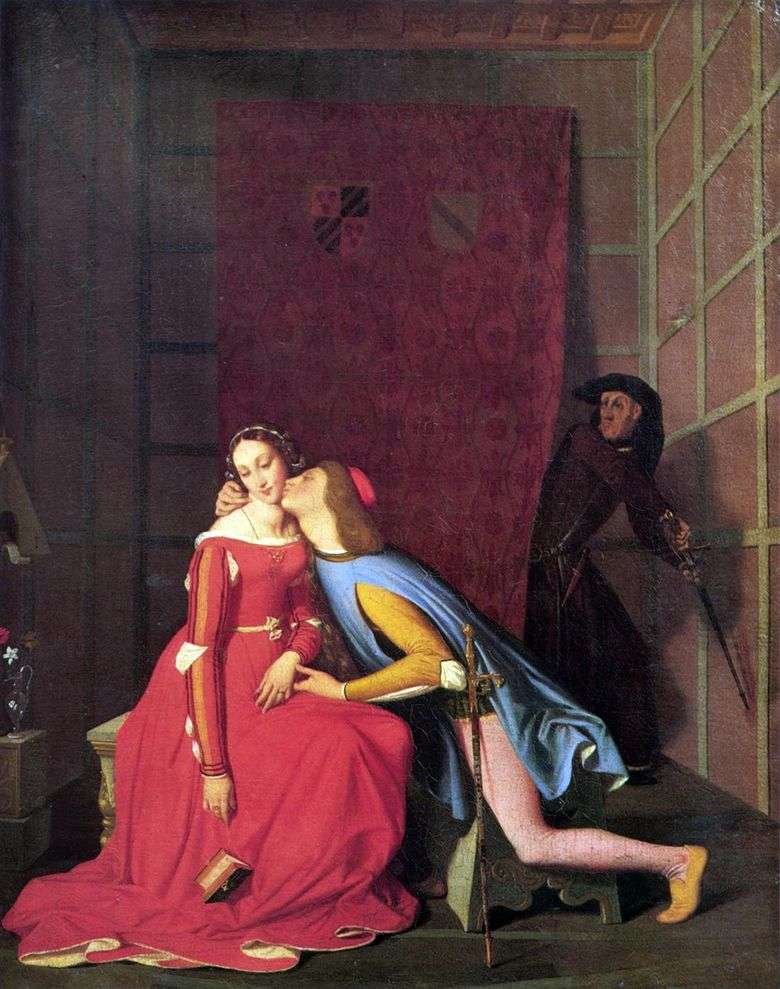 Janchotto supera a Paolo y Francesca – Jean Auguste Dominique Ingres
Janchotto supera a Paolo y Francesca – Jean Auguste Dominique Ingres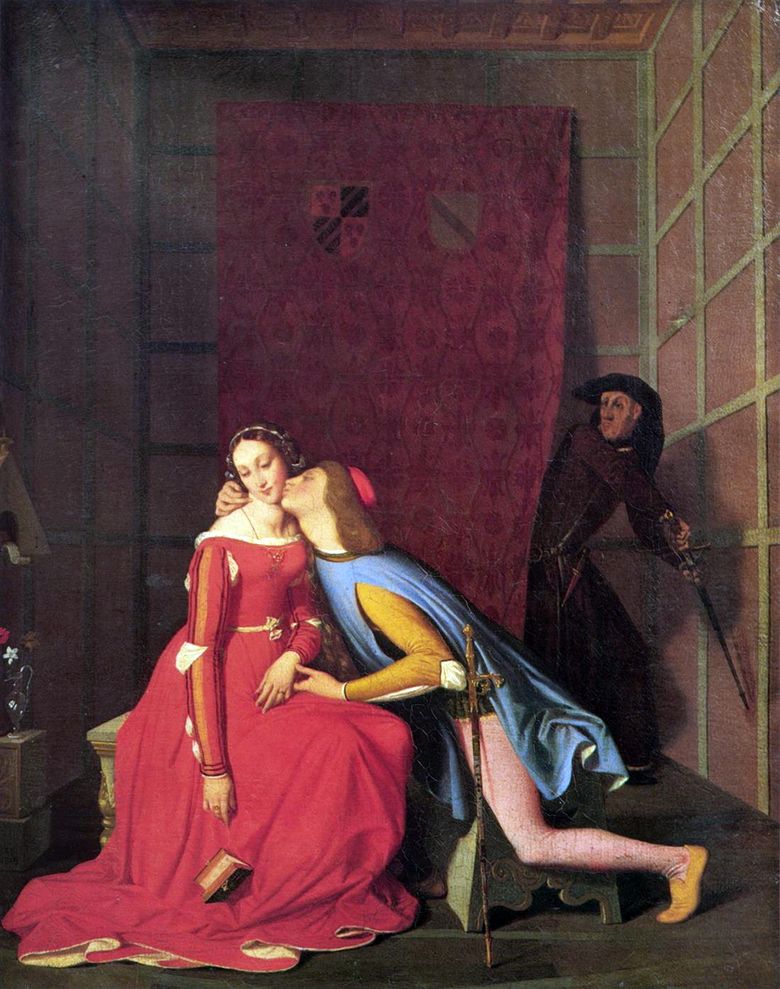 Giancotto dépasse Paolo et Francesca – Jean Auguste Dominic Ingres
Giancotto dépasse Paolo et Francesca – Jean Auguste Dominic Ingres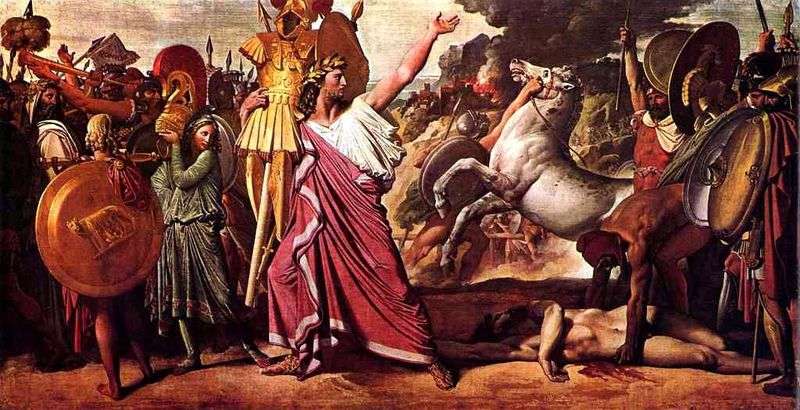 Romulus by the winner of Akron – Jean Auguste Dominique Ingres
Romulus by the winner of Akron – Jean Auguste Dominique Ingres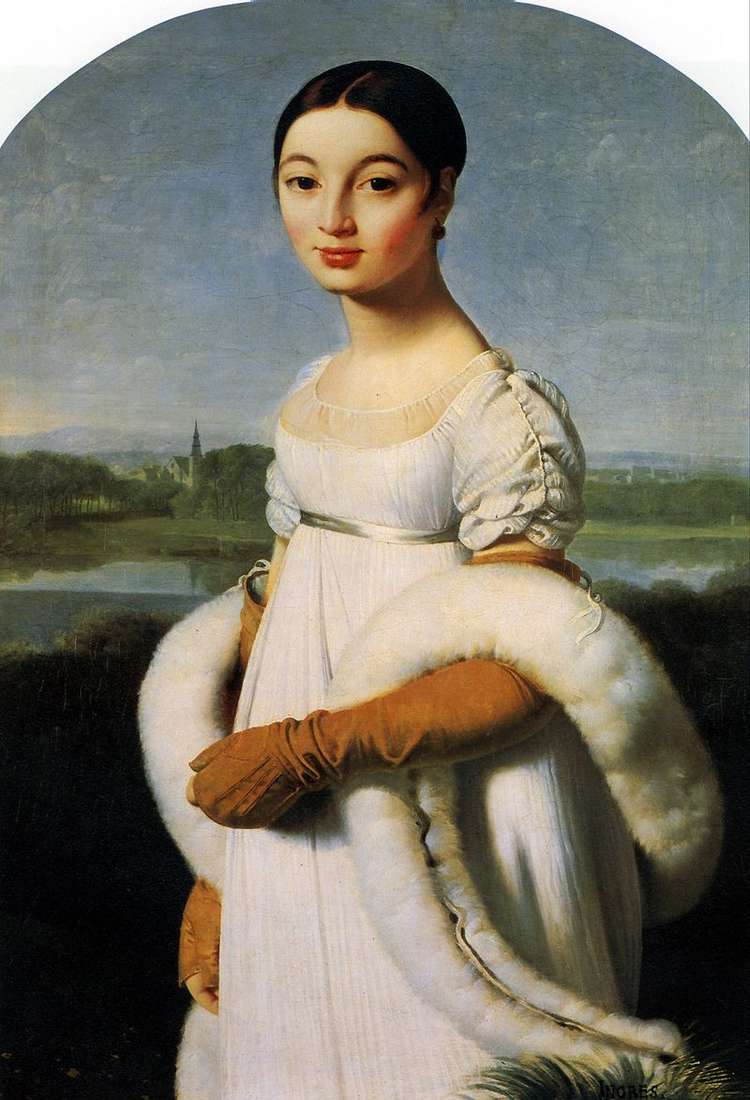 Mademoiselle Caroline Riviere by Jean Auguste Dominique Ingres
Mademoiselle Caroline Riviere by Jean Auguste Dominique Ingres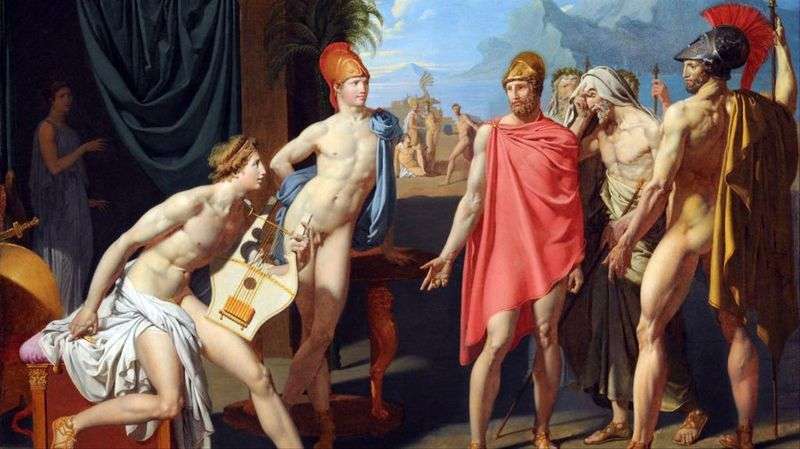 Ambassadors of Agamemnon in the tent of Achilles by Jean Auguste Dominique Ingres
Ambassadors of Agamemnon in the tent of Achilles by Jean Auguste Dominique Ingres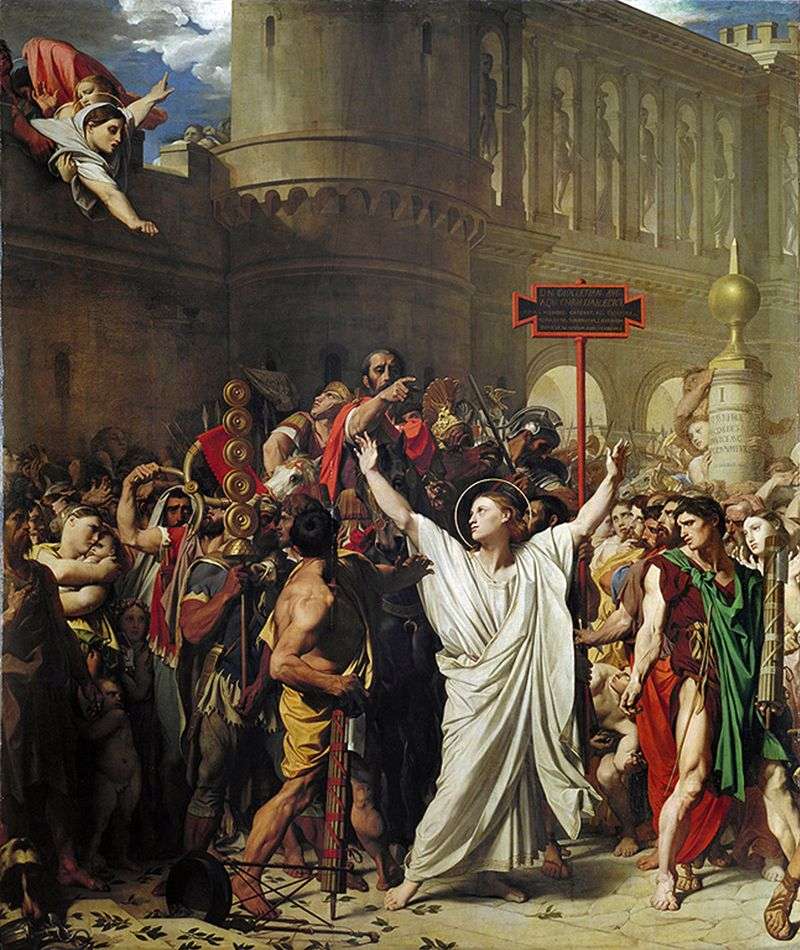 The Martyrdom of Saint Symphorion by Jean Auguste Dominique Ingres
The Martyrdom of Saint Symphorion by Jean Auguste Dominique Ingres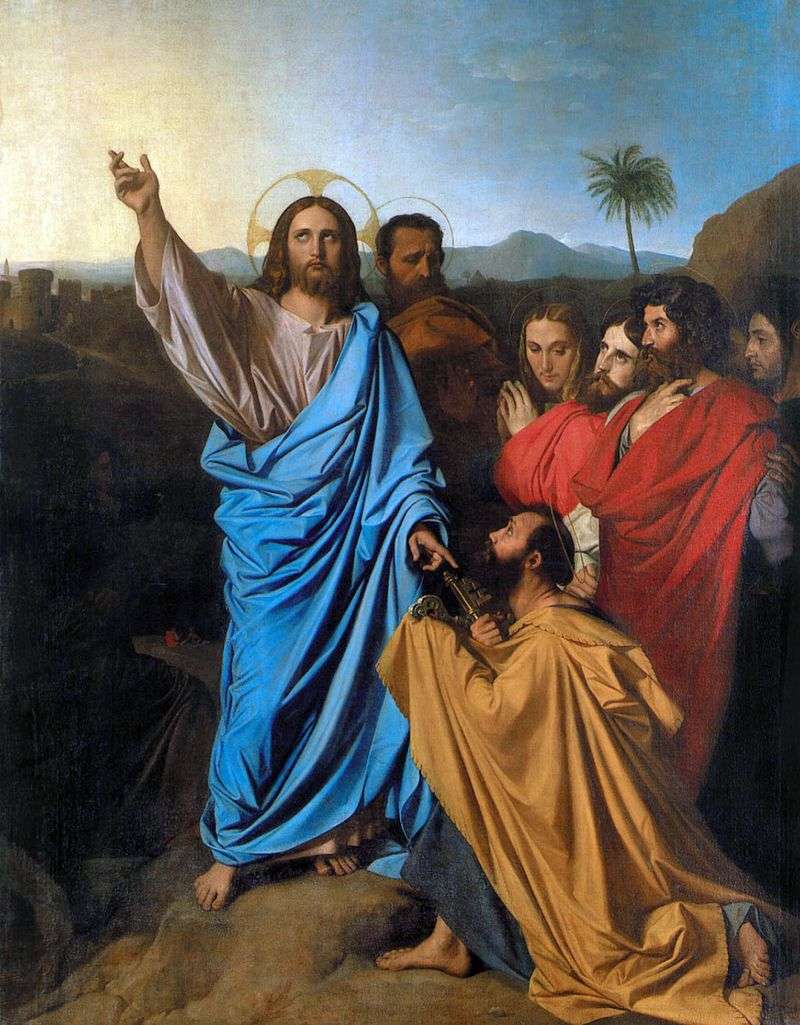 Christ transmitting St. Peter Keys from Paradise by Jean Auguste Dominique Ingres
Christ transmitting St. Peter Keys from Paradise by Jean Auguste Dominique Ingres Joan of Arc on the coronation of Charles VII by Jean Auguste Dominique Ingres
Joan of Arc on the coronation of Charles VII by Jean Auguste Dominique Ingres